全世界都在學習的日本正念禪修
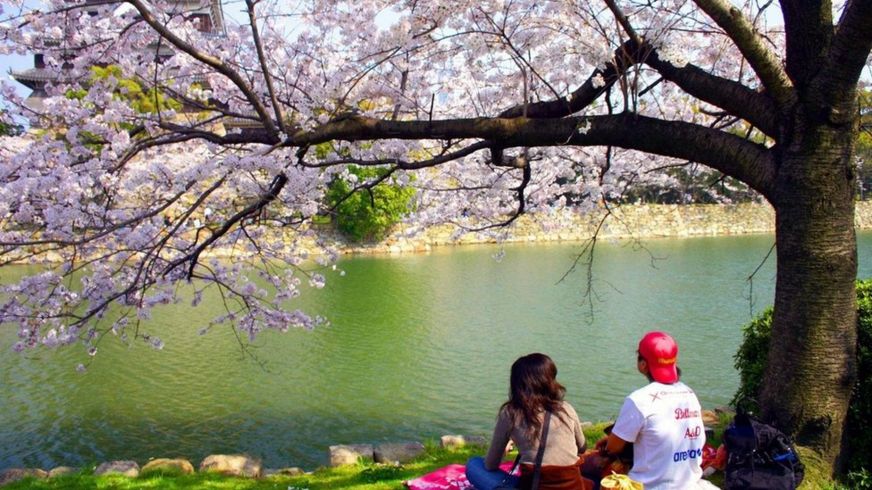 ANGELES MARIN CABELLO
ANGELES MARIN CABELLO
在流線型的新幹線子彈列車悄無聲息地駛出站台時,我看到了一個奇怪的儀式。在短暫的停車期間,最後一節車廂上的列車員開始自言自語:他做著一系列動作,大聲說話,最後對著列車的不同部件手舞足蹈地做著手勢。
這位列車員到底在幹什麼?他此刻的行為就是正念練習的一種。日本人把這項活動稱之為"指差確認"(日語裏的本意是"呼喚並確認"),這是日本鐵路員工已經持續了100多年的防差錯操練術。列車員用手指著需要檢查的器件,然後大聲叫出它們的名稱。通過自我對話加強印象,從而確保所有檢查項目都沒有遺漏。
 ALAMY
ALAMY
這一做法似乎很見效。1994年,日本鐵路技術研究院進行了一項研究,該研究也得到了《日本時報》的轉載。研究發現,工人執行簡單任務時的錯誤率是2.38%。而採取了"指差確認"操練術後,錯誤率降低到了0.38%——下降幅度達到驚人的85%。
這一做法好像和正念相距甚遠,近年來,正念已經成為"坐禪"(在席子上盤腿而坐進入冥想)的同義詞。馬薩諸塞州立大學醫學院榮譽教授喬·卡巴特-基恩(Jon Kabat-Zinn,他早在1979年就在這所醫學院建立了以正念療法為主的壓力舒緩診所)稱,正念"不是在腦子裏設想你正坐在一朵蓮花上,假裝自己是大英博物館裏的一尊雕像。簡單地說,正念就是一種瞬間意識。"
千百年來,這種瞬間意識已經深深植入日本人的心靈深處。沒人會刻意談起它,但它又無處不在。
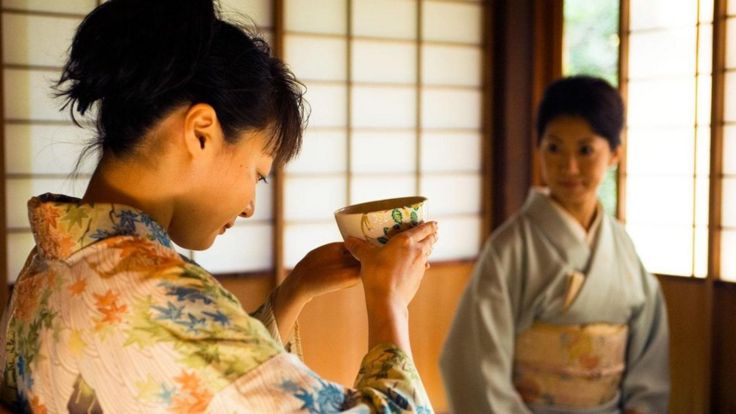 GETTY IMAGES
GETTY IMAGES
例如,茶道、俳句和觀賞櫻花都屬於對於"瞬間"的高水平審美。茶道過程中,茶客們會在飲茶前觀賞茶杯造型和茶室的裝飾畫,畫中描繪的是本月繁盛的樹葉和花朵。但是更重要的是,茶道要強調的是"瞬間"的價值,今天過後,這個場景,以及場景中的人都不會再次重現。
俳句是一種起源於17世紀的日本詩詞。這種專門描寫瞬間景色和感受的詩句已經成為一種世界知名的藝術形式。俳句只用17個音節就能抓住瞬間顯現的核心要素,並通過具有抒情意義的自然景象來表達一種類似於禪修的突然頓悟。最著名的俳句是松尾芭蕉所做,以青蛙為主題的一首俳句:
古池,蛙跳,水聲。
沒什麼比觀賞櫻花更充分地反映出日本人對於瞬間的留戀了。每年春天,日本各地的人們都會扶老攜幼去觀賞櫻花。他們為什麼對櫻花如此熱衷?櫻花花期極短,只有1周左右,是一種轉瞬即逝的花朵。"在日本人心目中,瞬間即逝的事物才是最美的,"日本禪宗法師、景觀設計大師枡野俊明說。
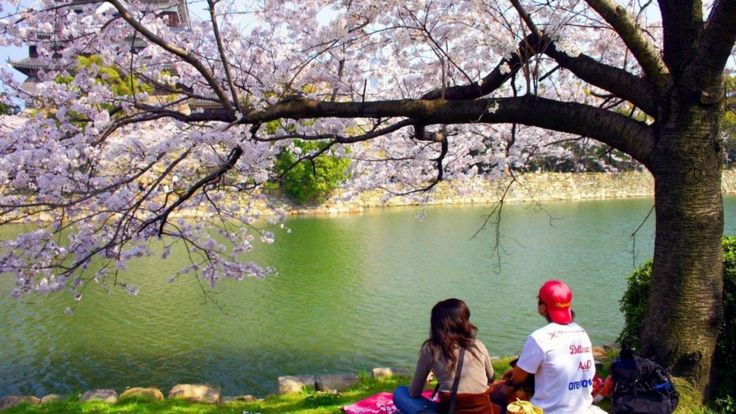 ANGELES MARIN CABELLO
ANGELES MARIN CABELLO
日本人對於瞬間的眷戀還體現在很多其他習俗當中,譬如賞月。(編注:中國之外)很少有一個國家會像日本一樣把9月裏的一個夜晚列為節日來慶祝月圓。另外,日本人還為從菜刀到毛筆,甚至用過的縫衣針等等無生命事物設立了紀念節日。
另外,還有越來越多的女性加入到觀賞苔蘚的行列中來。受到藤井久子的暢銷書《苔蘚》和《我親愛的朋友》的推動,在日本,觀賞苔蘚正在日漸成為一項時尚活動,年輕女性更是趨之若鶩,紛紛奔向日本各地鋪滿苔蘚的森林。她們並不像普通的遊客那樣看到玫瑰就停下來聞聞花香,而是跪在甚至趴在地上,用放大鏡仔細欣賞苔蘚的美麗。
對我們來說,苔蘚只不過是一種極為普通的低等植物,要是沒有布滿苔蘚的山石或石燈籠,就不能稱作是日本禪園。禪園是侘寂(wabi-sabi)的真實體現——侘寂是一種強調樸素而幽寂的精神,正是這種精神及其引申出的意境構建了日本美學的根基。
日本人的正念意識絶不僅僅是觀賞甲蟲和鮮花而已。有無數的儀式遍布生活的每個角落,它們都在告誡你要"珍視當下"。在學校,每天上學和放學時都要舉行簡短儀式,學生們相互問好,然後教師宣佈當天的活動內容。每堂課前後,學生和教師都會起立互致鞠躬禮。上課前,教師會要求學生閉上雙眼以集中注意力。
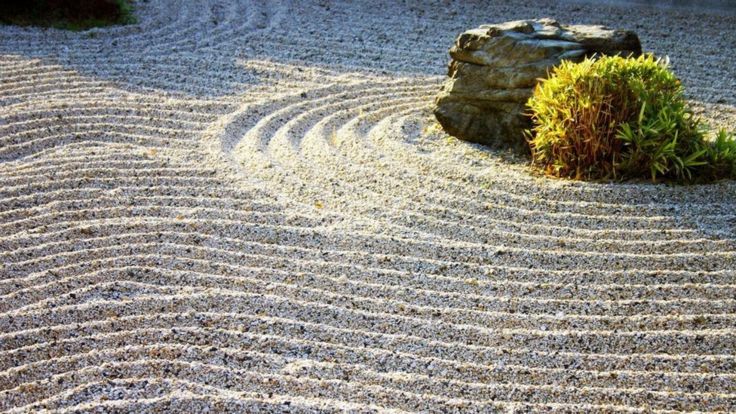 ANGELES MARIN CABELLO
ANGELES MARIN CABELLO
建築工人每天開工前則要做集體體操伸展四肢。在寫字樓裏,同事會對你說"您辛苦了"作為對你所做工作的感謝。把名片遞給別人,他會仔細端詳並評論一番,絶不會直接放進口袋。
卡巴特-基恩說,所有這些儀式的目的在於讓我們"關注那些我們一般不會考慮的事情。"這些儀式讓你在一天時間內知道自己身在何處,在做什麼事情,而不是像打開自動駕駛儀一樣度過一個小時接一個小時,只是為了等待下班鈴聲的響起。
和日本文化中其他大部分現象一樣,這些禮儀的來源都是禪宗。"千百年來,正念一直是佛教傳統的一部分,"京都妙心寺僧人川上高史說。早在鐮倉時代(1185-1333),禪宗就已流行於武士階層,並深刻影響了藝術、茶道、插畫和園林的早期發展。在太平無事的江戶時代(1603-1868),禪宗則進入了普通人的教育領域。
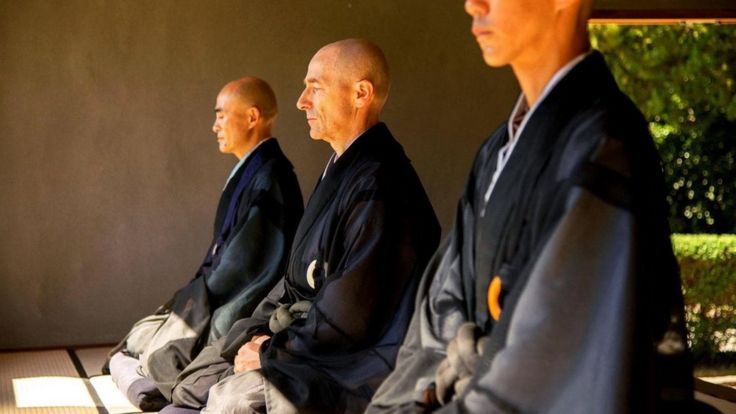 SHINSHOJI ZEN MUSEUM AND GARDENS
SHINSHOJI ZEN MUSEUM AND GARDENS
對於禪宗修習者而言,禪是一種滲透進生活方方面面的態度:沐浴、烹調、打掃、工作。"日常生活中的每一項活動和行為都是在修禪,"廣島縣福山神勝寺的桑垣江梨子說。
保羅·瑞普思(Paul Reps)1957年出版的禪宗文集中有一篇有趣的故事《禪肉禪骨》印證了這一觀點。故事的情節是:手野學習禪宗多年,希望成為禪宗教師。他前去拜訪禪宗大師南院法師,這天下起了暴雨。為了禮貌,手野把他的木屐和雨傘放在南院法師的門外。
雙方寒暄過後,南院法師問手野:"你把雨傘放在了木屐的左邊還是右邊?"手野答不上來,覺得自己距離禪宗的要求還很遠,於是回去又學了6年。
我們大多數人都不會把問題想那麼遠。然而,南院法師提出的問題卻仍然不失中肯。有越來越多的研究者發現,對瞬間意識的正覺不僅有助於緩解壓力、增加幸福感,還會抑制焦慮和抑鬱。
斯坦福大學同情心培養計劃高級教師利·維斯(Leah Weiss)是數量不斷增多的提倡"生活正念"的專家之一。"生活正念"是指在一天之內的所有時間都練習正念,而不是只做10分鐘的冥想。維斯說,正念能夠"增強你對自身意識、情感和周圍事物的了解,即便此刻你正在做任何其他事情。"
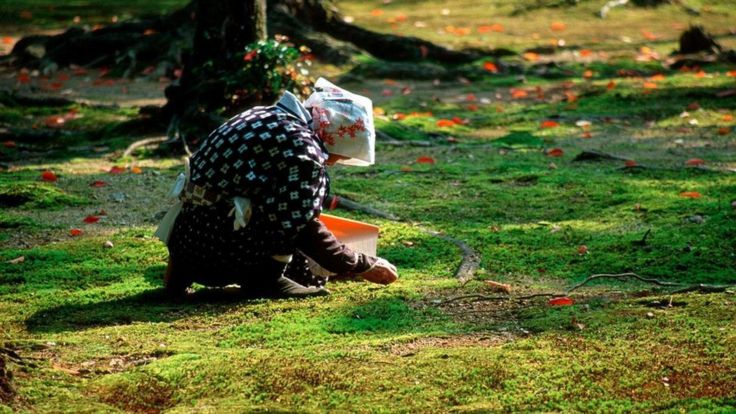 ALAMY
ALAMY
那麼,我們該如何在日常生活中練習正念呢?最好從簡單的事情開始做起,比如,早晨離家上班時不妨"指差確認"一番。燈關了嗎?查一下。窗戶關了嗎?查一下。帶錢沒有?查一下。帶手機沒有?查一下。這樣,你就永遠不會忘帶鑰匙。
或許,你還能擠出些時間觀察地上的苔蘚。
Mindfulness has become trendy around the world in recent years – but in Japan, it’s been ingrained into the culture for centuries.
As the sleek shinkansen bullet train glided noiselessly into the station, I watched a strange ritual begin. During the brief stop, the conductor in the last carriage began talking to himself. He proceeded to perform a series of tasks, commenting aloud on each one and vigorously gesticulating at various bits of the train all the while.
So what was he up to? You could say he’s practicing mindfulness. The Japanese call it shisa kanko (literally ‘checking and calling’), an error-prevention drill that railway employees here have been using for more than 100 years. Conductors point at the things they need to check and then name them out loud as they do them, a dialogue with themselves to ensure nothing gets overlooked.
And it seems to work. A 1994 study by Japan’s Railway Technical Research Institute, cited in The Japan Times, showed that when asked to perform a simple task workers typically make 2.38 mistakes per 100 actions. When using shisa kanko, this number reduced to just 0.38 – a massive 85% drop.
Mindfulness is moment-to-moment awareness.
This may seem a long way from mindfulness, which in recent years has become synonymous with what the Japanese call zazen – meditating cross-legged on a cushion. But according to Jon Kabat-Zinn, Professor of Medicine emeritus at the University of Massachusetts Medical School, where he founded its renowned Mindfulness-Based Stress Reduction Clinic in 1979, mindfulness is “not really about sitting in the full lotus… pretending you’re a statue in the British Museum. Simply put, mindfulness is moment-to-moment awareness.”
And this present-moment awareness has been deeply ingrained into the Japanese psyche for centuries. You don’t hear people talk about it, but it manifests itself in myriad ways.
Tea ceremony, haiku and cherry-blossom viewing, for instance, all share a heightened appreciation of the moment. In tea ceremony, participants take time to notice the design of the cup before drinking and appreciate the decoration of the tea room, which reflects the foliage and blooms of the month. But beyond that, the ceremony celebrates the fact that this moment with this person in this place will never happen again.
This moment with this person in this place will never happen again.
Haiku poetry, a Japanese literary tradition dating back to the 17th Century, elevated this celebration of the present moment to a world-renowned art form. Haiku poets attempt to capture the moment’s essence in just 17 syllables, using evocative images from nature to convey a Zen-like sense of sudden enlightenment. The most famous one is Matsuo Basho’s frog haiku, which translated from Japanese reads:
An old ponda frog jumpsthe sound of water
And nowhere is this celebration of the moment more evident than in cherry-blossom viewing, which sweeps the nation like a fever every spring. Why such excitement? Precisely because the blossoms are so fleeting, lasting only a week or so. “Transience forms the Japanese sense of beauty,” said Zen priest and garden designer Shunmyo Masuno.
Transience is celebrated in dozens of lesser-known practices too, such as moon viewing. You can’t help but admire a country that sets aside a special evening in September for contemplating the full moon. Or that holds lavish festivals to give thanks for the work done by inanimate objects, including everything from old kitchen knives to calligraphy brushes and even used sewing needles.
Transience forms the Japanese sense of beauty.
And there are the growing ranks of Moss Girls. Inspired in part by Hisako Fujii’s best-selling book, Mosses, My Dear Friends, moss-viewing has become increasingly trendy, especially with young women, who go on guided tours to Japan’s lush moss-carpeted forests. This goes way beyond just stopping to smell the roses: Moss Girls get down on hands and knees with a loupe to contemplate the lovely lichens.
And while to the less mindful among us moss may seem insignificantly small, no Zen garden is complete without its moss-covered rock or stone lanterns. It’s the living embodiment of wabi-sabi – the spirit of humble, rustic impermanence that defines Japanese aesthetics.
But there’s more to Japanese mindfulness than gazing at bugs and blooms. Countless practical applications govern virtually every aspect of daily life, all designed to help you ‘be in the now’. At school, days begin and end with a short ceremony, where greetings are exchanged and the day’s events are announced. Before and after each class, students and teacher stand, bow and thank each other. And before starting the lesson, students are asked to close their eyes to focus their concentration.
Similarly, construction workers engage in collective stretches to limber up for the day’s work. In the office, a colleague will tell you 'Otsukaresama', (literally ‘you’re tired’), as a way of saying thanks for the work you’ve done. At meetings, hand someone your meishi (business card) and they'll examine it carefully and make a comment, never dreaming of just sticking it in their pocket.
These practices are a way of what Kabat-Zinn calls ‘purposefully paying attention to things we ordinarily never give a moment’s thought to’. They help keep you conscious of where you are and what you are doing throughout the day, rather than stumbling from one hour to the next on autopilot, focused only on going-home time.
Like so much of Japanese culture, the roots of all these customs lie in Zen. “Mindfulness has been part of the Buddhist tradition for centuries,” said Takafumi Kawakami, priest at Kyoto’s Shunko-in temple. In the Kamakura Era (1185-1333), Zen became popular among the samurai class and had a formative influence on the arts, including tea ceremony, flower-arranging and landscape gardening. In the Edo Era (1603-1868), a time of peace, Zen found its way into the education of common people.
For its practitioners, Zen is an attitude that permeates every action: bathing, cooking, cleaning, working. “Every activity and behaviour in daily life is a practice [of Zen],” said Eriko Kuwagaki of Shinshoji Temple in Fukuyama, Hiroshima Prefecture.
A delightful old Zen story, collected in Paul Reps’ 1957 anthology of Zen texts, Zen Flesh, Zen Bones, illustrates this point. After studying to be a Zen teacher for many years, Teno went to visit Nan-in, an old Zen master. It was raining heavily and, as is customary, Teno left his clogs and umbrella in the entrance before entering Nan-in’s house.
Every activity and behaviour in daily life is a practice [of Zen].
After greeting each other, Nan-in asked Teno: “Did you leave your umbrella to the left or right of your clogs?” Unable to answer, Teno realised he was still a long way from attaining Zen, and went away to study for six more years.
Most of us might not want to take things quite so far. Nevertheless, Nan-in’s question remains relevant, as more and more researchers are discovering that present-moment awareness not only boosts stress resilience and well-being, but also lowers levels of anxiety and depression.
Leah Weiss, a senior teacher at Stanford University’s Compassion Cultivation Program, is one of a growing number of experts who advocate ‘mindfulness in action’. This is something to be practiced throughout the day, rather than just for 10 minutes’ meditation. Weiss described it as “becoming mindfully aware of your thoughts, feelings, and surroundings even while you’re engaged in some other activity.”
So how can we put a little more mindfulness into our lives? Start with something simple, like a bit of pointing and calling before you leave home in the morning. Lights off? Check. Windows closed? Check. Money? Check. Phone? Check. You’ll never forget your keys again.
Then maybe you’ll have time to stop and notice the moss.
http://www.bbc.com/ukchina/trad/vert-tra-40177111?ocid=socialflow_facebook






沒有留言:
張貼留言